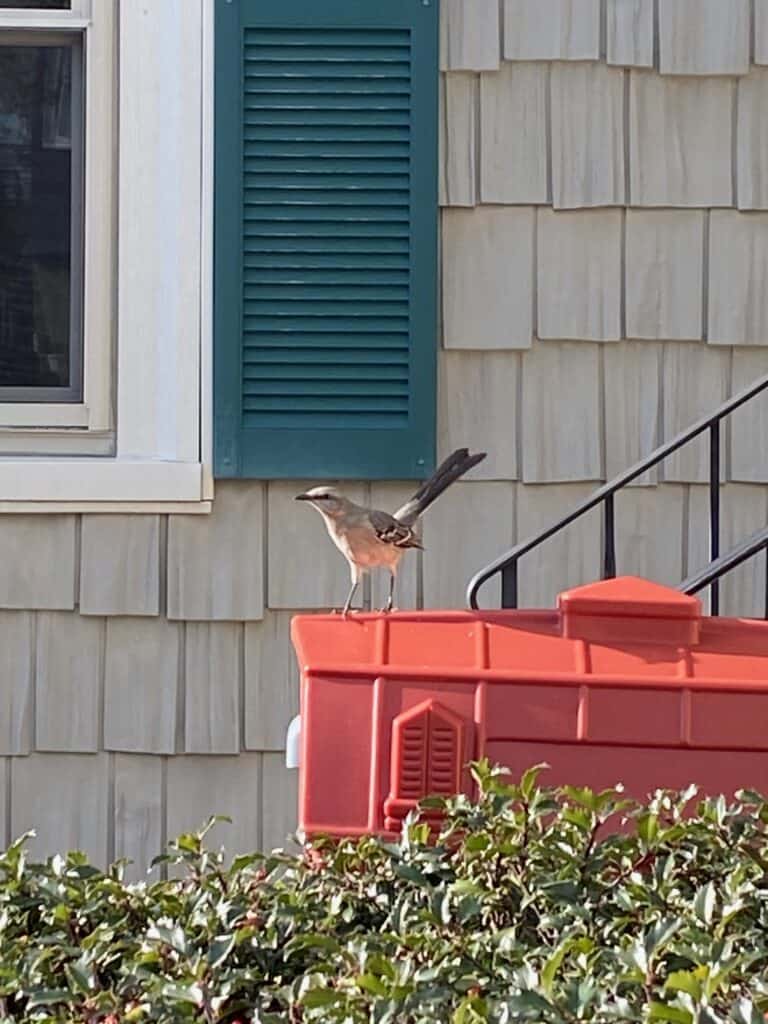Here’s what’s blooming in town this week to make your walks more enjoyable
By Laura Eisener
Winter has arrived without a doubt. The full moon will occur on Monday, January 13, the first full moon of 2025 and the first since the Winter solstice. It is often called the wolf moon.
In this cold weather people may spend more time with their indoor plants, although once you convince yourself to go out a brisk walk can warm you up quite a bit. Signs of spring are already here in the form of sprouting bulbs (green leaf tips of hyacinths and daffodils are visible poking out from the frozen ground already) and even color on flower buds of such plants as Lenten roses (Helleborus orientalis). Depending on the weather, Lenten roses can be expected to bloom anytime between late December (rarely) and early May, but it is most often late February to mid-March. Sometimes the buds appear, as they have in my garden already, but don’t fully open for a month or more. The buds on the Lenten roses at the Eric Devlin memorial tree near the rail trail in Saugus Center are showing bud color already, too – one looks pinkish and one is white nestled among the evergreen leaves.
The fruit of evergreen hollies like meserve hybrids (Ilex meservae ‘Blue Maid’ and others) may be considered primarily holiday decorations by people, but some wildlife appreciates them all winter long, as they may last until spring without losing their nutritional value. Mockingbirds can often be seen visiting holly bushes daily from late fall through early spring until other foods become available. In addition to the evergreen hollies, a deciduous species called winterberry (Ilex verticillata) has bright red fruits that serve as winter interest in the garden long after its leaves have gone. Winterberry shrubs are planted near the front of the Christopher P. Dunne Visitor’s Center at Breakheart, and they also grow wild, especially in slightly damp areas near the edges of ponds.
Northern mockingbirds (Mimus polyglottos) are native birds that, as their scientific name says, “mimic many tongues.” Its varied songs imitate sounds of many bird species. Among the many brownish gray sparrows and other birds in our area, mockingbirds have longer legs and a noticeably longer tail. Males can do a dramatic courtship dance. They generally subsist of berries and other fruits during the winter but switch to small insect larvae during the breeding season. They are the state bird of several southern states, and their range has gradually spread northward into Canada in recent decades, although some still travel southward for the winter.
Many people probably have poinsettias in their house that they purchased or were given for Christmas. Poinsettias may continue to “bloom” much longer than the Christmas season, often the color remaining in the bracts for several months. The tiny yellow flowers are usually clustered in the center of a whorl of colorful bracts. When you first purchase the plants, the flowers should be small green buds. A few weeks later, they will open and eventually dry up, but as long as the plant has been watered regularly the green foliage and red, pink, white or multicolored bracts will remain for quite a while. Sometimes the bracts become greener over time, but a few decades ago I had several poinsettias on my mantel at Christmas and most kept their color into February but one kept its red bracts intact until after Easter! It was not treated any differently than any of the others.
They do not like cold, but if they survive through the summer and fall in your house (or outdoors in partial shade for the summer), they should be put in a dark closet or box with no light peeking through the cracks for up to two months (I usually start in early October if I am hoping for rebloom a second winter) and kept dark until mid or late November, then brought back into normal light, and flower buds will usually develop, surrounded by the colorful bracts. You do have to water them occasionally while they are in the dark, and if you really need a light to see what you are doing, a reddish light is the best. Unlike the amaryllis, they may not be quite as good as new, as greenhouse staff usually pinches the plants through the summer to create a dense and symmetrical plant, but is very satisfying to have a plant turn color year after year.
Editor’s Note: Laura Eisener is a landscape design consultant who helps homeowners with landscape design, plant selection and placement of trees and shrubs, as well as perennials. She is a member of the Saugus Garden Club and offered to write a series of articles about “what’s blooming in town” shortly after the outbreak of the COVID-19 pandemic. She was inspired after seeing so many people taking up walking.



